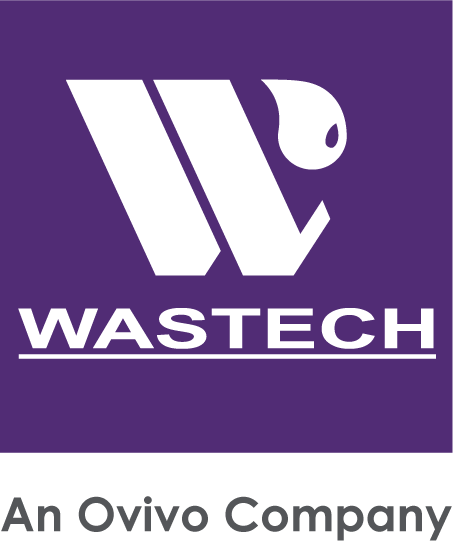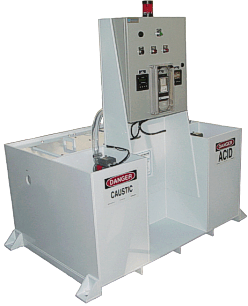Designing Waste Treatment Systems for School LaboratoriesA white paper by Wastech Controls & Engineering, Inc.
Treatment is now mandated either in the lab or in a centralized treatment system to prevent hazardous waste from reaching the sewer system. Most labs are protected with separate acid waste piping using PP or comparable materials. Laboratory waste is collected and flows to a treatment area. Wherever treated, the design and size of the system becomes a challenge. The system design becomes critical. Since it is impossible to predict what chemicals will be used in the lab and often in what quantities, sizing a centralized or local waste treatment system is difficult. For years, limestone has been the treatment choice for laboratories. Limestone is an excellent neutralizer and is still common in small systems. In large systems, the long retention time requires large tanks with huge quantities of limestone and the weight of the limestone and bulky packaging makes the maintenance and replacement time consuming and expensive. Limestone reacts with the acid to form a salt sludge and over a period of time will disappear into the sewer. Open up a limestone tank at any high school, and you will probably find it empty. The tank becomes a dilution system once the limestone is consumed, and the acid waste remains untreated and flows directly to the sanitary sewer. How are centralized treatment systems sized? The method used for years and still common for school laboratories involves counting the number of sink fixtures. It is arbitrary and is based on manufacturer's published data such as the following:
These limestone systems are often individual treatment tanks used in-line below lab sinks or using larger in-line tanks taking the discharge from a group of sinks. The amount of limestone required can be staggering. These charts were established for a flow-through system. If the limestone was ineffective (as it usually is after a short period of neglect) or the flow rate spikes at higher than anticipated levels, the waste flows untreated directly to the sewer. The attitude behind these designs was indifference to occasional discharge violations as long as the waste did not back up into the system. These concepts were established before current EPA restrictions and NOVs became commonplace. Now that penalties from environmental violations have risen to levels involving serious money and PR damage to the corporation or University, facility managers have been instructed to avoid violations at almost any cost. These older limestone designs represent a huge liability to the owners and design engineers. Another typical way to size the centralized neutralization treatment system is based upon the capacity of the discharge lines. A 10-story building with 120,000 sq ft of laboratory space will have a separate acid waste system usually constructed of 3-4" PP piping. Unfortunately, using the line size flow estimates will over-estimate the waste treatment system dramatically and burden the utility design. Using the discharge pipe size as a guide for the size of the treatment package may call for a system based upon 80-150 gpm. Given the waste extremes such as 0-1 pH acid and 12-13 pH base, a two- or three-stage neutralization system is possible. This would require a huge, costly system that will be redesigned a number of times during construction in an effort to lower the total cost. Industrial experience now offers a better solution. Wastech Controls has been supplying automated neutralization systems for industry for years and has developed the LabDELTA (for smaller laboratory systems) and the OMEGA products for large systems. The LabDELTA is an automated system for smaller flow rates. For university or R&D buildings, the OMEGA system is sized for higher continuous flow rates. These designs are automated skid mounted packages with all the controls, chemical storage, pumps and tanks needed for a flexible system with the surge capacity to handle brief peak flows. Classroom cleanup cycles, chemical spill procedures, floor drain events, equipment or tool discharges, and RO reject situations are addressed by the system design. The system includes redundant pH sensing and a control system that recycles the discharge volume if the pH is outside the discharge limits. These systems insure that the system is in compliance with discharge regulations. Unlike batch systems, a continuous system also offers a flow through design that prevents waste from backing up into the system while insuring proper treatment. The keys to neutralization are retention time and mixing efficiency. With proper tank sizing, reliable, state of the art, metering pumps and mixers, redundant industrial grade pH sensors and controllers, and alarms to warn of chemical supply problems and component failures, the automated OMEGA system takes the environmental and safety risks out of laboratory waste treatment. Foe more information, see OMEGA neutralization system features.
|


